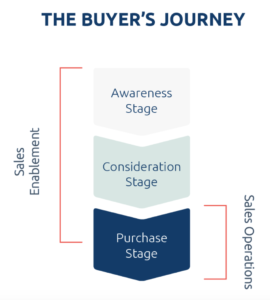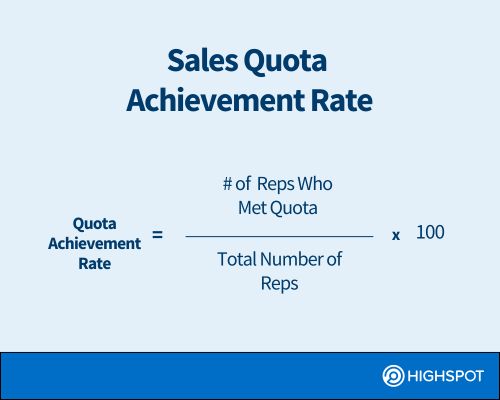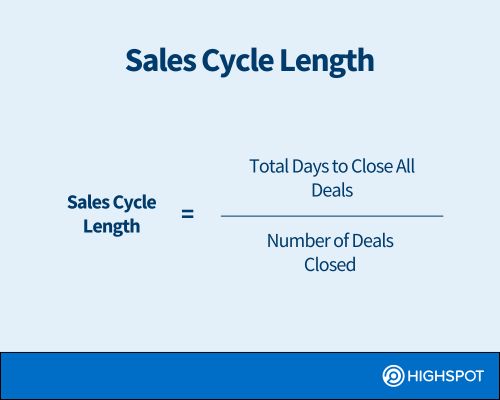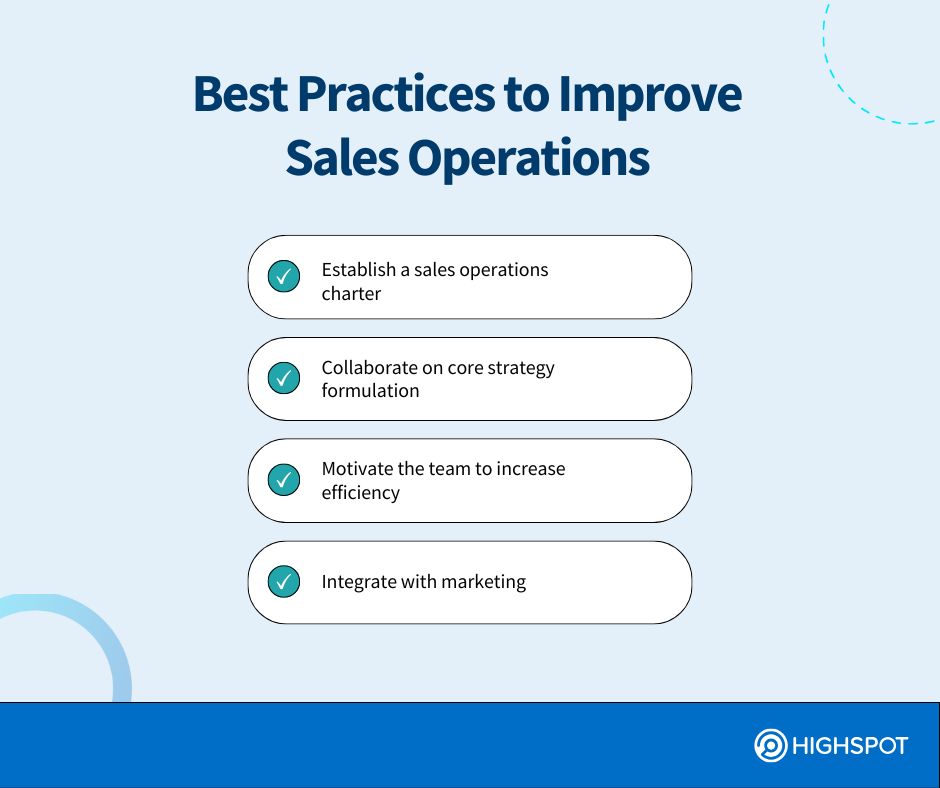Key Takeaways
- Sales ops handle the administrative and technical tasks so reps can focus on closing deals
- Sync with marketing and sales enablement teams to power up the sales cycle
- The biggest metrics for sales operations can be put into two categories: performance and efficiency
Sales teams have a lot on their plates—between juggling leads, managing pipelines, and closing deals, endless tasks can easily overwhelm even the most seasoned reps. Their day-to-day work has become even more difficult as the economic climate remains unpredictable, not to mention buyers now engage differently with sellers.
That’s where sales operations comes in. It works behind the scenes by staying ahead of problems, streamlining processes, and taking the weight off sales reps’ shoulders so they can focus on what they do best: selling.
When implemented alongside strategic training, tools, and engagement techniques, sales operations can help sales teams work smarter, get more done, and ultimately drive stronger results for your business. Its importance can’t be stressed further—82% of sales pros say sales operations is essential for business growth.
In this article, we’ll explore how sales operations can be the strategic backbone your sales team needs with comparisons, tools, and practical steps to maximize impact.
What Is Sales Operations?
Sales operations describe the functions and activities in sales organizations that keep frontline sales teams efficient and effective. It primarily handles the administrative and technical tasks that would otherwise burden salespeople. Sales ops also manages tools, processes, and data to improve sales productivity and give reps more time to engage with customers. It directly supports revenue growth through sales analytics, planning, and execution.
Much like how a supply chain operations team organizes the movement of goods from point A to point B, the sales operations function works behind the scenes to ensure that the many parts of a sales team move smoothly as one. By establishing clear processes and leveraging data, sales ops teams empower sales reps to focus on selling without internal roadblocks and improve revenue forecasting for leaders.
Why Is Sales Operations Important?
Sales operations are essential for keeping business efficient, controlling costs, and empowering sales teams. It ensures workflows run without disruption and sales territories are aptly covered so that reps can focus on revenue-generating activities.
A high-functioning sales ops team is a necessary growth partner. In fact, companies with dedicated sales ops see higher team alignment. Sales leaders depend on sales ops teams for valuable insights, forecasting strategy plans, and setting up dashboards and automation, so reps can prioritize selling over admin tasks or guesswork. With fewer blockers and greater predictability, the sales process becomes a strategic, data-driven engine.
What Is the Difference Between Sales Enablement and Sales Operations?

Sales enablement and operations play unique roles in sales success. Sales enablement prepares sales representatives for buyer interactions through onboarding, training programs, and content, while sales operations manages the tactical processes, tools, and data that keep sales running smoothly. Together, they strengthen the entire sales process.
These two teams often work in tandem. Sales enablement efforts are most impactful in the early stages of the buyer’s journey, like building awareness and guiding prospects through the consideration phase. Sales operations, meanwhile, gets involved closer to the final stages, where a technical understanding, negotiations, and closing processes make all the difference in winning deals.
| Sales Enablement | Sales Operations | |
| Primary Focus | Preparing reps for buyer engagements | Managing day-to-day tactical sales activities and behind-the-scenes processes for smooth sales operations |
| Core Responsibilities | – Sales training and mentoring, and SKOs – Content planning and management – Sales process analytics – Data management and communication – Customer engagement tools and processes – Tools and training for efficiency | – Lead generation and appointment setting – Sales territory growth forecasting – Pricing structure development – Sales incentive and compensation planning – Sales process optimization – Tool implementation and CRM management – Performance metrics data analysis – Revenue and sales strategy planning |
| Peformance Focus | Improving rep effectiveness in buyer interactions | Enhancing sales process and productivity |
| Sales Data & Tool Management | Content analytics, customer engagement data | CRM administration, sales metrics analysis |
| End Goal | Empowering reps during buyer interactions | Ensuring smooth sales processes |
What Does Sales Operations Do?
As you can tell, sales operations is the engine that keeps the sales team moving through the sales cycle. This role was created at Xerox in the 1970s and was described as “handling all the things that no one wants to do but was necessary to build a great sales force.”
A recent U.S. survey by LinkedIn and Nielsen highlights that sales operations professionals are taking on more responsibilities than ever, including managing sales technology and tools, overseeing strategic growth plans, and monitoring sales team performance.
Let’s dive into some of these duties.
Streamline the Sales Process
One of the most significant challenges sales reps face is time. On average, reps spend two-thirds of their time on non-selling activities. Sales operations overhauls that by removing manual tasks and automating processes. They weave automation into sales tools, simplify data entry, and even leverage AI to identify the most promising leads, freeing up reps to spend more time building customer relationships.
Lead Sales Planning
Sales operations are focused on today’s prospects and future opportunities. Working closely with sales leaders, they create strategic plans that tackle territory assignments, hiring needs, quota targets, and sales compensation models. This level of planning ensures that the sales team is ready for what’s to come and that business leaders know what to expect.
Monitor Sales Performance
Data drives everything in sales ops. These experts gather and analyze performance metrics, including annual revenue and KPIs like customer sentiment. By staying on top of this data, sales ops helps leaders make informed decisions, quickly identify problem areas, and pivot resources when necessary to improve sales performance.
Drive Go-to-Market Strategy
Sales operations helps shape a successful go-to-market (GTM) strategy. This team will use data to help answer GTM questions:
- Which customers should you target?
- What messaging will resonate?
- When is the best launch date
- What’s the optimal price point?
They also analyze factors like who to target for beta and if existing customers may serve as early adopters. By gathering and interpreting this data, sales ops ensures that every element of the GTM plan is insight-driven, products are ready to sell, and the entire launch is successful.
Manage the Tech Stack
Sales ops oversees the tech stack that keeps sales teams running smoothly. Over 75% of sales ops professionals handle essential sales and business development tools, making it easier for them to translate data into actions. They’re constantly exploring new technology, such as AI, to boost productivity, reduce administrative work, and ensure data accuracy. By keeping the tech stack optimized, sales ops create a streamlined experience for the entire team.
Sales Operations Roles and Responsibilities
The sales operations department typically reports to the CEO or COO and often falls under the sales organizational structure. It has several levels of expertise, from specialist to VP, each with distinct responsibilities. Let’s explore these roles and what each level brings to the team.
Sales Operations Specialist/Representative
This entry-level, technical role handles basic data collection, cleaning, and reporting. They may help the sales team with CRM maintenance and problem-solving. Look for someone who is data-driven and eager to learn.
Sales Operations Analyst
This role requires 2-3 years of experience and works to analyze and communicate data. They provide sales reports, administer compensation programs, and make recommendations for sales operations initiatives. Candidates should know sales methodologies, be proficient with business intelligence platforms, and communicate insights clearly.
Sales Operations Manager
Reporting to a VP level, this managerial role oversees the execution of sales operations strategy, managing team members, ensuring collaboration across teams and smooth daily operations. Candidates should have 5–9 years of experience, proficiency in platforms (e.g., CRM, BI tools), and strong project management and communication skills for partnership with executives.
Vice President or Director of Sales Operations
This senior leadership role drives the overall sales operations strategy and aligns it with broader business goals. With typically 10+ years of experience, this person collaborates closely with sales leadership and executive teams to set long-term goals, optimize processes, and lead high-level planning initiatives. They oversee the sales operations team, manage budgets, and are responsible for continuous improvement across the sales organization.
Top Sales Operations Tools
Sales operations tools help teams automate workflows, crunch data, and keep everything running smoothly. At the heart of it all is CRM software, the central hub or single source of truth where everything connects. Ensuring tools integrate seamlessly with the CRM is non-negotiable for a sales ops team.
Here are some must-have tools for sales ops:
Customer Relationship Management (CRM) Software
Your CRM is where every customer interaction, deal, and insight lives. A CRM, like Salesforce, organizes contacts and accounts and tracks the entire sales pipeline, helping salespeople and leaders stay on top of each opportunity.
What are the most important CRM features to look for? Consider lead management, workflow automation, and reporting dashboards. These features allow leaders visibility into essential performance metrics. A study found that using CRMs is positively associated with improved customer knowledge and satisfaction, underscoring how critical they are for a competitive edge.
Sales Enablement Platform
Sales enablement solutions like Highspot empower sales professionals with the resources they need to win deals. From onboarding and training to sales playbooks and content management, these platforms provide structured guidance for new and seasoned reps. Enablement tools also support ongoing sales coaching, making it easy for sales managers to personalize training based on a sales rep’s strengths and weaknesses. With a robust sales enablement platform, new hires ramp up faster, and seasoned reps spend more time selling.
Sales Intelligence Tools
Sales intelligence is the secret weapon for understanding prospects, buying groups, and accounts more granularly. They gather real-time data on critical accounts, competitor activity, and even the likelihood of a deal closing. With these tools, sales teams can reduce data errors, focus on high-potential accounts, and personalize outreach based on data findings. According to Forrester, companies using sales intelligence saw a 15% higher win rate for acquisition, retention, cross-sell, and upsell.
Sales Forecasting Solutions
Forecasting software takes the guesswork out of planning and lets sales teams build more accurate projections. These tools analyze past performance, pipeline health, and current market conditions to predict future sales outcomes. They provide a realistic view of what’s to come for leadership.
A sales ops team can help the organization succeed with the right tech stack. Look for tools that work well with your processes and integrate with your existing solutions to create a cohesive ecosystem.
Related Resource: The Essential Revenue Tech Stack
Key Sales Operations Metrics and KPIs
Organizations need clear and consistent metrics to truly measure the impact of sales operations. These key metrics generally fall into two categories: performance and efficiency. Let’s explore the top metrics, how to calculate them, and why they matter.
Top Five Performance Mangement Metrics
1. Sales Quota Achievement
This metric shows the percentage of sales reps who meet their sales quota within a specific period. It helps gauge how well sales teams are performing against targets. A high quota achievement rate suggests good sales processes and accurate targets, while a low rate may indicate obstacles in the sales cycle.
Quota Achievement Rate = (Number of Reps Who Met Quota / Total Number of Reps) × 100

2. Win Rate
Win rate measures the percentage of closed-won deals compared to the total number of won or lost opportunities. A high win rate indicates good sales tactics or product-market fit, while a low rate suggests issues with negotiations or customer targeting.
Win Rate = (Number of Won Deals / Total Deals (Won + Lost)) × 100
3. Average Deal Size
This metric represents the average value of deals closed by sales reps in a time period. Deal size impacts revenue growth potential and helps forecast revenue accurately. Monitoring this metric helps sales ops make targeting decisions. They may decide to focus on high-value deals or take a more volume-focused approach.
Average Deal Size = Total Value of Deals Closed / Number of Deals Closed
4. Sales Pipeline Value
The sales pipeline is the total estimated value of opportunities in the pipeline at a given time. It indicates the revenue potential of ongoing opportunities. By tracking this metric, sales ops can identify gaps or opportunities for meeting revenue goals.
Pipeline Value = (Value of Each Deal in Pipeline)
5. Forecast Accuracy
Forecast accuracy assesses how closely predicted sales align with actual results. How reliable are your sales predictions? Higher accuracy improves business planning with intelligent resource allocation, hiring, and inventory management.
Top Five Efficiency Metrics
1. Sales Cycle Length
Sales cycle length shows the average time it takes for a deal to move from initial contact to closing. A shorter sales cycle indicates skill in converting prospects, while a long cycle may reveal bottlenecks along the way. The shorter the sales cycle, the lower your customer acquisition cost (CAC) will be.
Sales Cycle Length = Total Days to Close All Deals / Number of Deals Closed

2. Selling Time
Selling time represents the percentage of time sales reps spend actively selling rather than on administrative tasks. Maximizing selling time boosts productivity. If selling time is low, it may be a sign of excessive administrative functions that could be redistributed or automated.
Selling time = (Hours Spent Selling / Total Work Hours) × 100
3. Lead Response Time
Lead response time is the average time it takes for reps to respond to new leads. Fast response times improve conversion rates, as leads are more likely to convert when engaged quickly. A slow response time may indicate inefficiencies or a need for reprioritization.
Lead Response Time = Total Time to First Response for All Leads / Number of Leads
4. Prospect Meetings
This metric counts the total number of prospect meetings each rep sets up within a specific period, reflecting sales reps’ activity levels. Consistently low meeting numbers might signal a need for more rigorous prospecting efforts.
5. Pipeline Efficiency
Pipeline efficiency shows how well sales reps move deals through each stage of the pipeline. You’ll gain insight into how well sales reps manage and prioritize deals. Low efficiency may indicate a need for training or changes in pipeline management techniques.
Pipeline Efficiency = (Closed Deals / Total Opportunities Entered in Pipeline) × 100
How to Build a Sales Operations Strategy
Modern sales operations teams are the secret to faster sales cycles. Sales excellence relies on the operations team’s ability to streamline workflows. If you’re new to sales operations, start by preparing a strategy, assembling the right team, collaborating across the business, and investing in the right technology.
Let’s start with initiatives to include in your sales ops strategy.
- Improve reporting workflows and accuracy
- Automate selling and non-selling tasks wherever possible
- Evaluate and integrate your tech stack for seamless use
- Develop compensation and incentive plans
- Optimize processes and oversee successful implementation
The initiatives you prioritize will depend on your team’s maturity. For a new sales ops team, start by auditing your CRM, integrating tools, aligning with marketing, and establishing a forecasting strategy.
A more established sales ops team should focus on optimization rather than implementation. This may involve updating CRM dashboards, refining compensation plans, or adjusting processes to support your growing team. As your business evolves, sales operations will be ready to maintain efficiency and keep the sales cycle moving smoothly.
Best Practices to Improve Sales Operations
Sales operations practices vary widely and are influenced by each organization’s culture, size, market, and maturity. What works for one team may not work for another. No matter where your company finds itself, here are some of the best practices for sales operations.

Establish a Sales Operations Charter
Every sales ops team needs a clear purpose. Define why the team exists and what success looks like. This clarity can be created by crafting two simple, repeatable statements for the team’s mission and vision. Many teams document these elements in a charter and share it across the organization. This visibility helps prevent confusion, sets expectations, and keeps everyone moving forward on shared goals.
For example:
- Mission statement: “Our mission is to empower the sales team by simplifying processes, relying on data for business decision-making, and providing the tools they need to be productive and close deals faster.”
- Vision statement: “We strive to be a partner that delivers operational excellence and aligns sales efforts with business goals. We will support growth and a seamless customer experience.”
Revisit these guiding statements quarterly or annually to gauge relevance and perform updates.
Collaborate on Core Strategy Formulation
Sales operations thrives when it works hand-in-hand with sales and sales enablement leaders to shape goals. Combining sales ops’ data insights with sales leadership’s market and territory knowledge leads to more robust, targeted strategies.
Achieve tight alignment with other teams by holding weekly leadership syncs. Leaders should come prepared to discuss progress on major initiatives and prioritize work. This will ensure that your sales operations team is focused on completing the most impactful projects and that adjacent functions have visibility into your work.
Motivate the Team to Increase Efficiency
Sales operations has the ability to improve processes, automate non-core tasks, and administer CRM systems and other tools. When these functions are handled well, it transforms sales representatives’ ability to work efficiently and can have a dramatic impact on your bottom line.
Recognize and celebrate these achievements to keep the team motivated, whether it’s through quarterly MVP shoutouts or company-wide presentations. Acknowledging success boosts morale and highlights the team’s value across the organization.
Integrate with Marketing
When sales operations teams work closely with marketing teams, they can help develop a better sales funnel structure. That’s because marketing teams can utilize the data-driven insights collected by sales operations and measure their lead effectiveness. Additionally, alignment between marketing and sales ops protects the integrity of your account data and lead management.
Separate from your sales leadership sync, you should also regularly meet with marketing leaders to ensure that your marketing and sales platforms are fully integrated and your priorities are aligned. You may also consider hosting office hours, where marketing program managers can ask technical questions in person, thus further reducing confusion, email chains, and misalignment.
Sales operations is often seen as just a support function, but it is much more than that. It’s a critical driver of growth and efficiency. When deployed with sales enablement, training, and engagement strategies, sales operations teams give sellers the boost they need to stay ahead of competitors, engage modern buyers, and reach sales goals.
With the best practices in this guide, you now have the framework you need to set up your sales ops to succeed. Take it further by aligning sales ops teams with sales enablement to see your business evolve. Request a Highspot demo to see how a unified sales enablement platform can boost GTM productivity.




